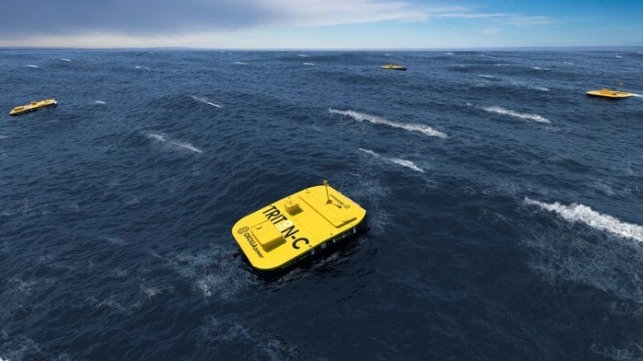U.S. DOE Provides $25 Million for R&D and Demonstration of Wave Energy

The U.S. Department of Energy will provide $25 million in funding to support increased research, development, and demonstration of technologies that harness wave power to create electricity. The funding supports eight projects that will make up the first round of open-water testing at the PacWave South test site off the Oregon coast.
The selected projects are part of DOE’s Water Power Technologies Office (WPTO) “Advancing Wave Energy Technologies through Open Water Testing at PacWave” funding opportunity to support wave energy technologies through research, development, and eventual deployment. The wave energy converters, seek to capture and convert the natural energy created when wind blows over the surface of the open water.
“Harnessing the unrelenting power of the ocean is a clean, innovative, and sustainable way to curtail carbon pollution — benefitting American businesses and families, especially coastal communities hit hardest by the impacts of climate change,” said U.S. Secretary of Energy Jennifer M. Granholm. “Diversifying and expanding our clean energy sources will usher in a new era of energy independence that makes the grid more resilient, curbs the climate crisis, and saves Americans money on their energy bills.”
According to DOE, testing of wave energy technologies requires realistic conditions to be deployed at scale. Obstacles to testing in the open ocean include permitting challenges and a scarcity of available test sites. In 2016, DOE partnered with Oregon State University to build the PacWave South test facility, which is a grid-connected, pre-permitted, open-water wave energy test facility. In March 2021, the Federal Energy Regulatory Commission issued Oregon State University a license to build and operate the nation’s first pre-permitted wave energy testing facility. The test site is located about seven miles offshore southwest of Newport, Oregon, with the university targeting the summer of 2023 for the first tests.
Two of the projects that were selected focus on testing wave energy converter system designs intended for remote and microgrid applications. CalWave Power Technologies received the largest grant for $7.5 million to deploy and test its 50-kilowatt xWave WEC device. Columbia Power Technologies is also receiving nearly $4.2 million to commercialize an autonomous offshore power system that has the ability to perform adjustments to maintain its position and store energy. The system is designed to support unmanned offshore activities and equipment, including subsea vehicles, sensor packages, and operating equipment.
The second area of research focuses on WEC system designs to generate off-grid or grid-connected power. Both Dehlsen Associates and Oscilla Power will each receive $1.8 million to design and test WEC absorber systems that can be either connected to or disconnected from the electricity grid.
Finally, the project will also perform wave energy R&D designed to advance the marine energy industry. These projects are expected to advance WEC systems, system components, environmental monitoring technologies, instrumentation and prognostic health monitoring systems, wave measurement systems, and other supporting technologies. Portland State University receives $4.5 million, Littoral Power Systems $4 million, University of Washington $1.3 million, and Integral Consulting $379,000, to conduct these projects.
